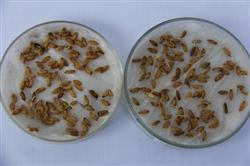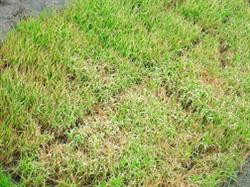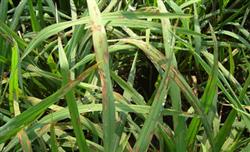Breeding techniques for blast resistance of rice

The history of rice blast resistance breeding in China can be divided into four stages according to the evolution of breeding methods and the use of resistance sources: 1. In the stage of systematic breeding, the most important method is the systematic breeding method of individual plant selection (or pure parent breeding) by using natural variation. Local varieties are mostly used as the source of resistance. two。 In the stage of systematic breeding and cross breeding, the characteristics of this stage are the combination of systematic breeding and cross breeding, professional institutions and mass breeding, and the resistance sources used are both local varieties and foreign resistance sources. 3. In the stage of mainly hybrid breeding and parallel multiple approaches, the outstanding achievement is to popularize and apply hybrid rice on a large scale, and the resistance sources are mainly IP series varieties introduced from foreign countries, especially international rice. Another prominent feature is the use of interspecific hybridization of japonica rice to develop varieties with high quality, multi-resistance and higher yield. 4. In the stage of the combination of conventional breeding and new technology breeding, with the continuous development of science and technology, breeding technology will be continuously improved and updated. In conventional breeding, the utilization of heterosis will change from "three-line method" to "two-line method" or "one-line method". The heterosis of japonica indica subspecies will be popularized and applied in breeding practice through screening wide compatibility varieties and with the help of new anther culture techniques, and blast resistance will form a new and higher breeding goal with high quality, high yield and resistance to other diseases and insect pests. in the aspect of new technology breeding, anther culture technology has been used in the breeding of common varieties and hybrid rice, and great progress has been made. The new technology of disease resistance breeding refers to the application of biotechnology in disease resistance breeding, which has the following characteristics: 1. Look for ways to transform the nature of organisms at the tissue, cellular or subcellular levels (including nuclei, organelles), especially at the genetic level. two。 It is possible to enhance the consciousness of directed transformation of biological organisms, especially at the molecular level of breeding, it is possible to transform organisms. 3. Greatly expand the scope of species hybridization and increase the frequency of species variation. 4. It can propagate seeds quickly, accelerate the homogenization of hybrid offspring and improve the efficiency of selection. At present, disease resistance breeding techniques are widely used in the following methods: 1. Embryo and ovule culture embryo culture or ovary culture is that after hybrid fertilization of distant plants, degenerated embryos or ovaries are taken from immature seeds and cultured in test tubes. In vitro culture and ovule culture is in vitro fertilization, that is, under aseptic conditions, ovules are extracted from the ovary and placed on a culture stem containing various nutrients, and then the pre-collected and sterilized pollen is given to the ovule for fertilization. A few days later, the fertilized ovule expands and moves the ovule to a special culture stem until it grows into a seedling. The purpose of the application of this technique is to obtain distant hybrid seeds which can not be obtained by conventional methods, which is of great significance for disease resistance breeding, and it makes it possible to make use of disease resistance genes in heterogeneous plants. Ovary or ovule culture is the main way to obtain haploid in some plants which are difficult to succeed in anther culture, male sterile plants and some plants with obvious ploidy variation and character variation. 2. Anther culture is an effective way to obtain unit plants, which has been successfully applied to plant breeding practice. Haploid chromosomes are doubled and offspring are rapidly purified, thus shortening the breeding years. In addition, unit plants are of great significance in discussing the origin and genetic composition of diploid parent species. Compared with conventional breeding, anther culture breeding has other characteristics besides shortening the number of years: first, the selection efficiency is improved, the natural doubling of haploid makes the diploid homozygous once, and the systematic genetic characters of offspring are rapid and stable. it is beneficial to the identification and selection of disease-resistant and susceptible types. Second, when the target loci of most loci are stable, anther culture breeding is more effective than conventional breeding. The reason is that anther culture breeding can fully show various gamete types at the plant level, avoiding the dominant gene being shown by the epistasis of recessive genes and the traits controlled by recessive genes. The probability of homozygous target genotypes in anther culture breeding is 1.2%, which is much higher than that of conventional breeding. Third, the population (or system size) selected by the progeny of anther culture breeding is the conventional breeding. Fourth, the drug source of anther culture generally comes from the selected individual, not the individual. If double-resistant individuals are used as drug sources, the chance of recombination between the genomes of parents with homozygous target genotypes in anther culture is less than that of self-crossing, and if the purpose is linked to the genes of bad traits, the probability of the occurrence of target genotypes will be reduced. at this time, the polymerization breeding method of anther culture can be used to break the bad linkage in order to accumulate the good genes of many parents. In addition, the anther culture ability of rice varies with the type of rice. Generally speaking, glutinous rice has the highest induction rate and differentiation rate. Japonica rice was the second, indica rice and wild rice were the lowest. 3. Cell screening using toxins produced by plant pathogens or other similar screening plant disease-resistant mutants (or variants) is a new way to artificially create new sources of resistance and improve disease resistance of varieties. The hyphae of Magnaporthe grisea are covered on the culture medium, so it is difficult to distinguish between resistant and susceptible calli, so only toxins or analogues produced by pathogens are used for resistance screening. Cell screening should be combined with field resistance in order to obtain the target character and lose its good character at the same time. 4. Cell fusion is a new technique for obtaining somatic hybrids. It overcomes the difficulty of distant sexual hybridization, breaks the boundary of species classification, expands the scope of utilization of germplasm resources, and creates a way to introduce useful traits such as disease resistance and cold tolerance from distant plants. One is to use X-ray or X-ray to treat the heteroplast with the target gene, inactivate part or most of its nuclear DNA, and then fuse with the sound receptor protoplast to select the individual with the target gene from the redifferentiated plant, and the target variety can be obtained by backcrossing. Second, the haploid protoplast, which is the donor at the tetramolecular stage of pollen, is fused with the diploid receptor protoplast, and the diploid receptor DNA plays a leading role. As a result, the redifferentiation ability of the plant can be improved. when the triploid somatic hybrid is obtained and finally restored to the diploid level by backcrossing, the fertility can be improved and the gene can be introduced. Cell fusion is also applied to the direct transduction of heterologous cytoplasm. using cell fusion technique, the protoplast of cytoplasmic male sterile line An is treated by radiation. The nuclear DNA was completely inactivated, and the protoplasts of the transferred variety B were treated with chemical agents. The cytoplasm of the male sterile line was inactivated, and then the two were fused, and the redifferentiated plants obtained from the fusion cells were male sterile lines with cytoplasm of male sterile line An and nucleus of transferred variety B. in this way, the transfer of male sterile lines can be successful in one year. The resulting somatic hybrids are also called cytoplasmic hybrids. This method still can not avoid blindness and is far more accurate than genetic engineering. It is suitable for transferring agronomic traits controlled by polygenes. 5. Gene recombination this technique is to extract the target gene by chemical or biological methods, after modification such as cutting and splicing, after introducing the foreign gene into the recipient cell with the help of vector or chemical substance, after the foreign gene is inserted into the recipient cell, can be expressed in the receptor cell. The steps of gene recombination include the extraction and modification of target gene, the construction of gene vector, the introduction of gene, the culture of transgenic plant cells, the selection of plant cells after gene transformation and the identification of transgenic plants. the methods of transferring genes can be divided into two categories: carrier method and direct method. Vector method is the most commonly used method at present. The original vector is the proplasmid of Agrobacterium tumefaciens. There is a segment of DNA on the original plasmid, namely T-DNA. When Agrobacterium tumefaciens infects plant cells, T-DNA can be inserted into the genome of plant cells and can be stably passed on to the later isolated cells. The advantages of vector method are simple operation and stable genetic expression. However, these vectors are only suitable for dicotyledonous genes. The direct method is to introduce the target gene directly into the cells of human receptor, which includes the chemical transformation method with protoplast as receptor, such as PEG (polyglycol), which uses polyglycol as fusion agent to fuse heteroplasms together, that is, protoplast fusion method. Calcium phosphate-PEG, improved protoplast fusion method. Electroporation is a method in which a part of the cell membrane is quickly opened by a very high voltage to make the exogenous DNA enter the protoplast. Microinjection, which is directly injected into the cell with an injection needle, has the following advantages: one is that it can use both protoplasts as receptors and cell blocks composed of cells or a small number of cells as foreign gene receptors. Second, the cells with high recombination rate can be selected for gene transfer. Third, because the gene introduction is more real and reliable, there is no need to screen the markers of gene transformation. Fourth, it can introduce not only genes, but also viruses or organelles. Later, the gene introduction method at the plant in vivo or plant organ level was established. Resistance source is the material basis of disease resistance breeding. Whether we can create a new situation of disease resistance breeding and generally improve the resistance level of crops mainly depends on whether there are sufficient resistance parents. And whether the resistant parents can be used reasonably, the gene sources are discovered from local varieties, foreign varieties, distant relatives, wild species and disease-resistant mutants produced by artificial mutagenesis. At the same time, we should also pay attention to the relationship between blast resistance and other characters. The varieties with both blast resistance and other excellent characters were selected.
- Prev

Rotten Rice seedlings and its Preventive Countermeasures
Rotten rice seedlings are the general name of rotten seeds, rotten buds and dead seedlings that occur in the seedling stage. Rotten rice seedlings can be divided into two types: physiology and infectivity. Physiological rotten seedlings are mainly caused by low temperature and poor management measures, infectious rotten seedlings are caused by pathogen infection, and the main diseases are rice cotton rot, rice rot and rice.
- Next

Classification standard and control method of rice blast
Grading standard leaf plague: 1 sporadic occurrence, careful investigation can see the disease 2 slightly more, the disease leaves concentrated in the lower 3 widespread, the disease leaves concentrated in the middle and lower 4 more serious, the disease leaves concentrated in the middle and upper, a small amount of pond 5 serious, there are obvious pond...
Related
- The first cup of black tea in spring, the flavor and history of tea gardens in Kenya, Africa
- The computer can not only choose potatoes, but also grow tea rice. AI will grow winter oolong tea champion.
- It is not only the inflated tea bitten by insects, but also engraved with the four seasons tea in Beipu.
- The Oriental Beauty Tea Festival in Zhuxian County takes the stage at the weekend to experience the plus-size feast of oil tea.
- & quot; Oriental Beauty Tea & Exploration of Emei in Hsinchu, the hometown of quot;
- The new variety of strawberry "Tainong 1" dessert is the first choice with mellow aroma. Crimson gorgeous
- History of Tea in Taiwan: from Wild Inner Mountain to Export Tea Garden
- Two types of Taiwan Oriental Beauty Black Tea won the British three-Star Award for Childhood Tea Xiang Zhang Jiaqi changed from pilot to champion tea maker.
- Banana species and varieties: the planting history of Taiwan Xianren banana and dwarf banana is long, is banana disease resistant?
- Coffee planting Technology: Qianjie Coffee from Seedling to harvesting

